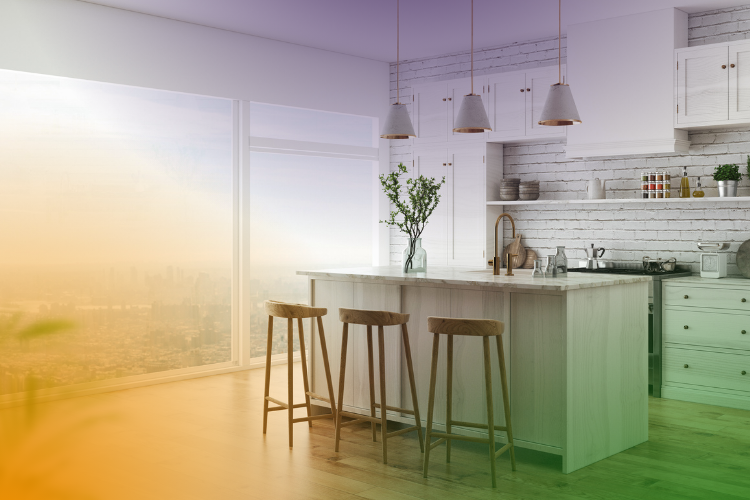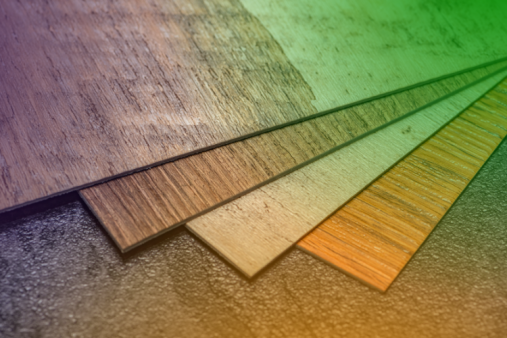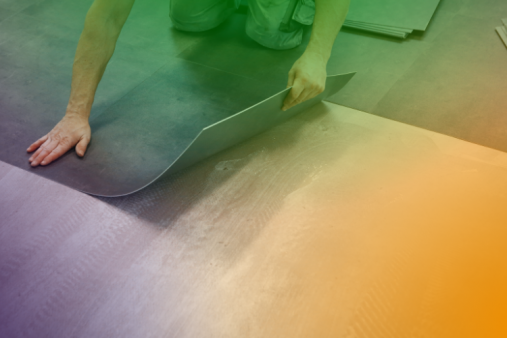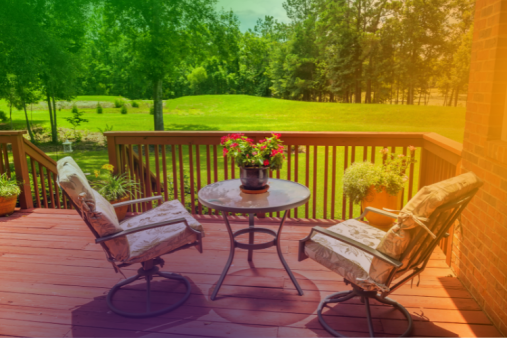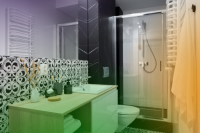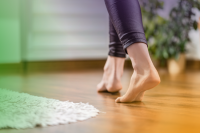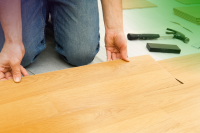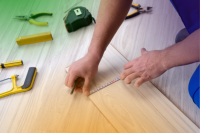How to choose the best kitchen flooring - your options explained
It’s often said that the kitchen is the heart of the home, and it’s certainly a space which sees a lot of traffic every day. When shopping for a new floor for the kitchen, you need something hard-wearing, durable, waterproof and which looks great too. With so many options, where do you even start looking?
Why Kitchen Flooring is Important
Kitchens are used every day, by every member of the family. As with bathroom floors, your kitchen floor has to deal with water and moisture, so needs to be waterproof. Many of us have back doors into the garden from our kitchen, and with kids, pets and muddy feet, ease of cleaning is key too. Kitchen flooring needs to stand up to things being dropped on it, and should not become overly slippery when things are spilled. You have a wide choice of different kitchen floorings, so before you hit the shops, take some time to think about the potential advantages and disadvantages of each.
Hardwood Kitchen Flooring
Often seen as the luxurious and traditional choice, hardwood flooring has the benefit of never really going out of fashion. Hardwood flooring is very long-lasting and can feel warmer underfoot than tile. Although hardwood flooring isn’t totally waterproof, it can be treated to become water-resistant, giving you time to clean up spills without the concern that you’ve damaged the planks forever. Some hardwood floors can be slippery though, which is why many homeowners opt for reclaimed timber which doesn’t have the ultra-smooth finish associated with newly-varnished planks straight from the warehouse. You also have a lot of flexibility over how you lay your flooring; the kitchen floor doesn’t have to be just straight planks of wood when you have the option to create a herringbone effect, or use two different tones of wood to create a huge range of different effects.
Laminate Kitchen Flooring
Laminate has many of the same advantages as hardwood – it’s warm and natural, and can be water-resistant for splashes and spills. Laminates have the added benefit of being cheaper per square metre than solid hardwood, and especially with the more expensive laminate products, can look just as good. Laminates are very easy to install, with most planks just clicking together without the need for glue or nails. Laminate is a good choice when you have an uneven surface to work on, as it “floats” over the existing flooring rather than needing to be glued down. Finishes on laminates vary too, so take a trip to your local flooring showroom to see what they stock. Experts predict that the future trend for laminates will be for extra wide or long planks, or mixing different lengths and styles in the same room. This can look very effective, but you may wish to get the experts in to lay the floor for you.
Tile Flooring in the Kitchen
Tiles have been used in kitchens for centuries and are very durable. Tiles which are installed properly, grouted and sealed are entirely waterproof, which is why we use them in shower enclosures and swimming pools. Tiles come in every shape, design and colour imaginable, and intricate designs can be created by using different shapes or colours together. Ceramic or porcelain tiles are the most popular choice, as they won’t stain when things are dropped or spilled. Porcelain tiles are the most durable tiles of them all, as they are baked at extremely high temperatures during the production process. The downside of this is that porcelain can have a polished or glossy finish, which might become slippery. Look for tiles with ridges or other textured patterns to reduce the risk of trips or falls.
Natural Stone
Stone is perhaps a slightly more expensive option, but is a good choice if you are going for the natural look in your kitchen. Although it undeniably looks great, stone flooring does take a bit more looking after than porcelain or ceramic tiles. Stone is naturally porous, and will need to be sealed at installation, and then re-sealed every few years to keep it looking good. Spills should be mopped up right away, to prevent your stone floor becoming stained with coffee or red wine. Trend predictions for stone flooring are again towards the oversized tiles, and for lighter and darker shades used together to create a unique look.
Vinyl Kitchen Flooring Options
There are many reasons why vinyl flooring is probably the most popular flooring choice for British kitchens. Vinyl flooring has come on leaps and bounds in recent decades and is worlds away from the lino floors we all remember in granny’s kitchen. Modern vinyl comes in sheets, tiles and planks, and in a huge range of finishes and colours. Vinyl flooring can be made to look like granite, wood or ceramic tile, and the planks can be laid to form a range of patterns or effects such as the popular herringbone. Vinyl flooring is completely waterproof and is very easy to care for and keep clean. Although the more complicated designs will require professional installation, with some basic DIY skills and a Stanley knife, it’s not too difficult to install vinyl flooring yourself.
Which Kitchen Flooring Is Right for Me?
Flooring, as with all design choices, is largely a matter of personal taste and preference. There are no rights and wrongs, so feel free to consider all options. Before you start shopping though, set a budget and try to stick to it. Some options are much more expensive than others, and a very top-end laminate might even be more expensive than a cheaper hardwood, for example. Think about other items you have in the kitchen, and take paint samples with you when shopping. Consider also the cost of installation, and how long you may have to wait to have your new floor fitted. Skilled joiners are always in high demand and the same can be said for flooring fitters. Start by looking around local showrooms or online to find a whole world of design inspiration.
